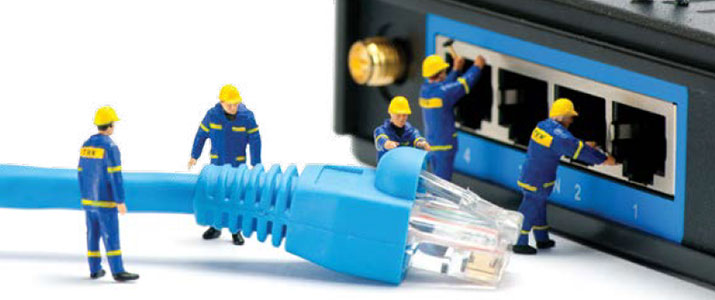
Boosting Legacy Infrastructure
Networking will enhance capabilities for communication and monitoring functions
- By Jim McLaughlin
- May 01, 2013

The transition of existing physical security
systems, such as fire and burglar alarm or
video surveillance systems, to the next generation
of technology has never been easier
or more affordable than it is today. Using
relatively inexpensive devices that act as
transparent bridges, legacy systems can be network connected
to provide enhanced capabilities for communication
and monitoring functions to create an improved security and
safety environment.
A typical security system is doing its job when it generates an
alarm. The alarm and accompanying serial data stream is routed
to auxiliary relays and eventually the information is acted upon.
For example, a burglar alarm triggers a phone call to a central
station, resulting a call to the local police and a call list of management
staff. Going through the various protocols can often
take between 20 to 30 minutes before a manager is informed of
the situation.
By upgrading the system with network connectivity devices,
the alarm and data stream is passed through a high-speed Ethernet
network for faster communication and response. The alarms
can be programmed to instantly trigger emails and text messages
to mobile devices and, with authorized access to Internet routing,
the information can be sent anywhere in the world in seconds.
The need for affordable network connectivity solutions for legacy security systems has led to the development of products
like American Fibertek’s Net I/O series. The company’s portfolio
of Net I/O products was designed specifically to optimize
performance and capability of legacy systems with cost-effective
network technology upgrades. The Net I/O series provides
network connectivity for alarm contact in, auxiliary relay out
and a full duplex serial-data channel. Alarm contacts generated
at one location can trigger auxiliary outputs anywhere on the
network. For the first time, physical contacts no longer have any
distance limitations.
Devices are easily configured through their own Web server
using any common Web browser. Four user-programmable data
ports for RS-232 or RS-485 serial communication are designed
to carry information from remotely located point of sale (POS),
access-control systems and alarm panels. Three set-up pages are
available, including network alarm and auxiliary set-up pages.
Configurations can be set for normally open or closed alarms,
and for text messaging and email address notifications upon
alarm triggers. User entry fields for a name and location allow
multiple devices to be easily identified.
Data also can be transmitted to NVRs and servers located
anywhere on the network. However, without a router to the Internet,
the signals would all be limited to the local area network
(LAN). With Internet access via routers,' these signals could be
sent anywhere across the country or the world.
A serial data channel from a legacy system connected to the
Net I/O allows that stream to be transmitted in standard Internet
protocol RFC2217. There are shareware software packages
that can add RFC2217 serial ports to personal or work computers,
connecting this data stream to anyplace with network access.
Many software packages for IP video contain drivers for this type
of network data stream, allowing further integration into modern
systems.
Today, there is no reason why tight budgets and limited funding
could or should prevent legacy-type systems from taking
advantage of information-age connectivity. With minimal investment,
there are ways to bring these systems onto the network and
access the speed of the modern information age.
This article originally appeared in the May 2013 issue of Security Today.
About the Author
Jim McLaughlin is the vice president of product development at American Fibertek Inc.